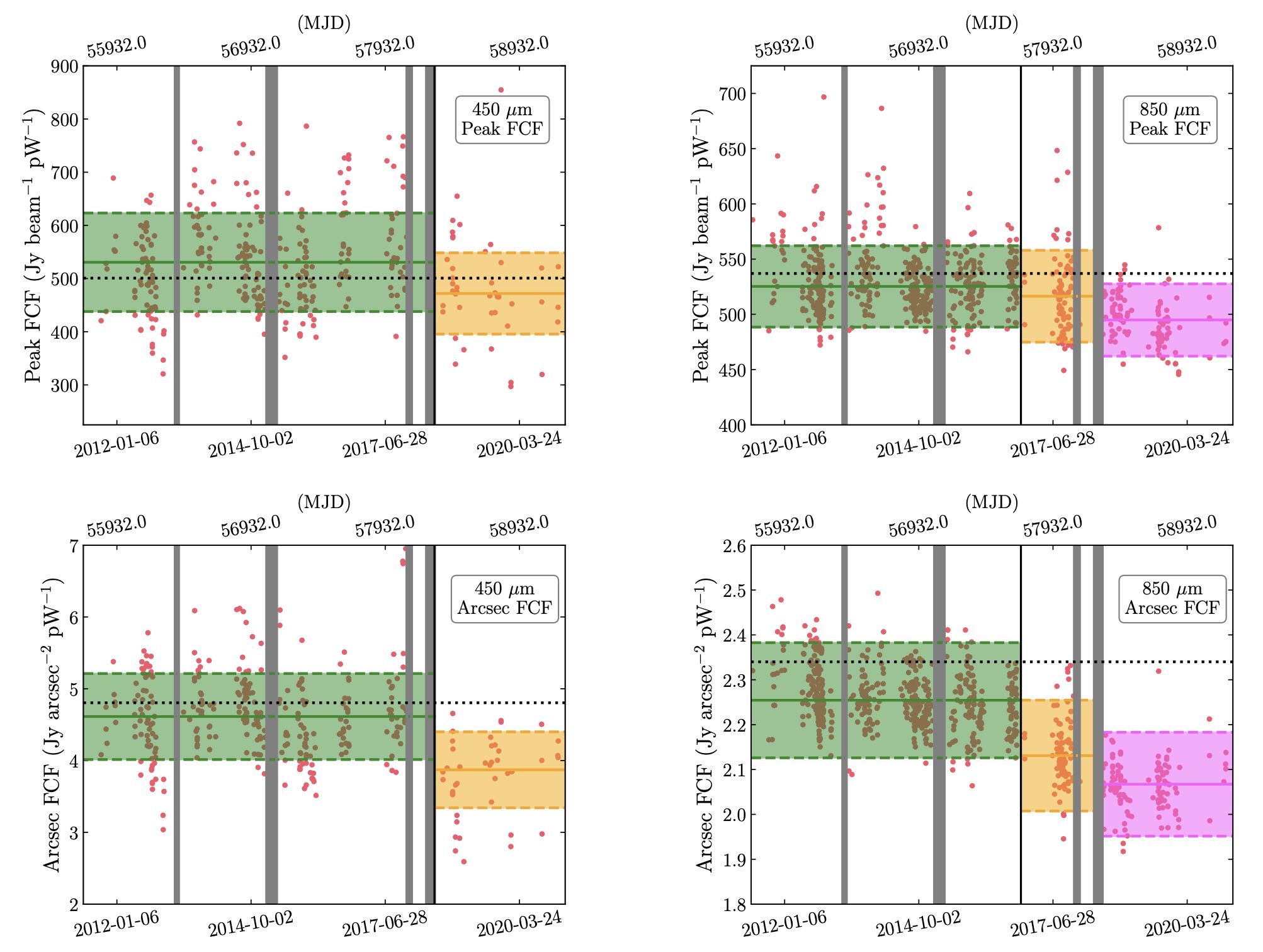We are pleased to announce the publication of a new, comprehensive guideline to calibrating SCUBA–2 data obtained from 2011 to the present day:
This work updates the opacity relations used to correct for atmospheric attenuation, summarizes significant changes in flux conversion factor (FCF) values by date and time, details the beam properties at both 450 and 850 microns, presents historical records of standard calibrator fluxes, and includes a case study for Quasar 3C84.

Figure 1: Flux Conversion Factors (FCFs) as a function of time at 450 microns (left) and 850 microns (right). For more information, see Mairs et al. 2021.
Up-to-date SCUBA-2 calibration information can always be found here:
https://www.eaobservatory.org/jcmt/instrumentation/continuum/scuba-2/calibration
A Decade of SCUBA–2: A Comprehensive Guide to Calibrating 450 m and 850 m Continuum Data at the JCMT
Abstract
The Submillimetre Common User Bolometer Array 2 (SCUBA–2) is the James Clerk Maxwell Telescope’s continuum imager, operating simultaneously at 450 and 850 microns. SCUBA–2 was commissioned in 2009-2011, and since that time, regular observations of point-like standard sources have been performed whenever the instrument is in use. Expanding the calibrator observation sample by an order of magnitude compared to previous work, in this paper we derive updated opacity relations at each wavelength for a new atmospheric extinction correction, analyze the Flux Conversion Factors used to convert instrumental units to physical flux units as a function of date and observation time, present information on the beam profiles for each wavelength, and update secondary calibrator source fluxes. Between 07:00 and 17:00 UTC, the portion of the night that is most stable to temperature gradients that cause dish deformation, the total flux uncertainty and the peak flux uncertainty measured at 450 microns are found to be 14% and 17%, respectively. Measured at 850 microns, the total flux and peak flux uncertainties are 6% and 7%, respectively. The analysis presented in this work is applicable to all SCUBA–2 projects observed since 2011.
Mahalo,
Steve, on behalf of the JCMT



